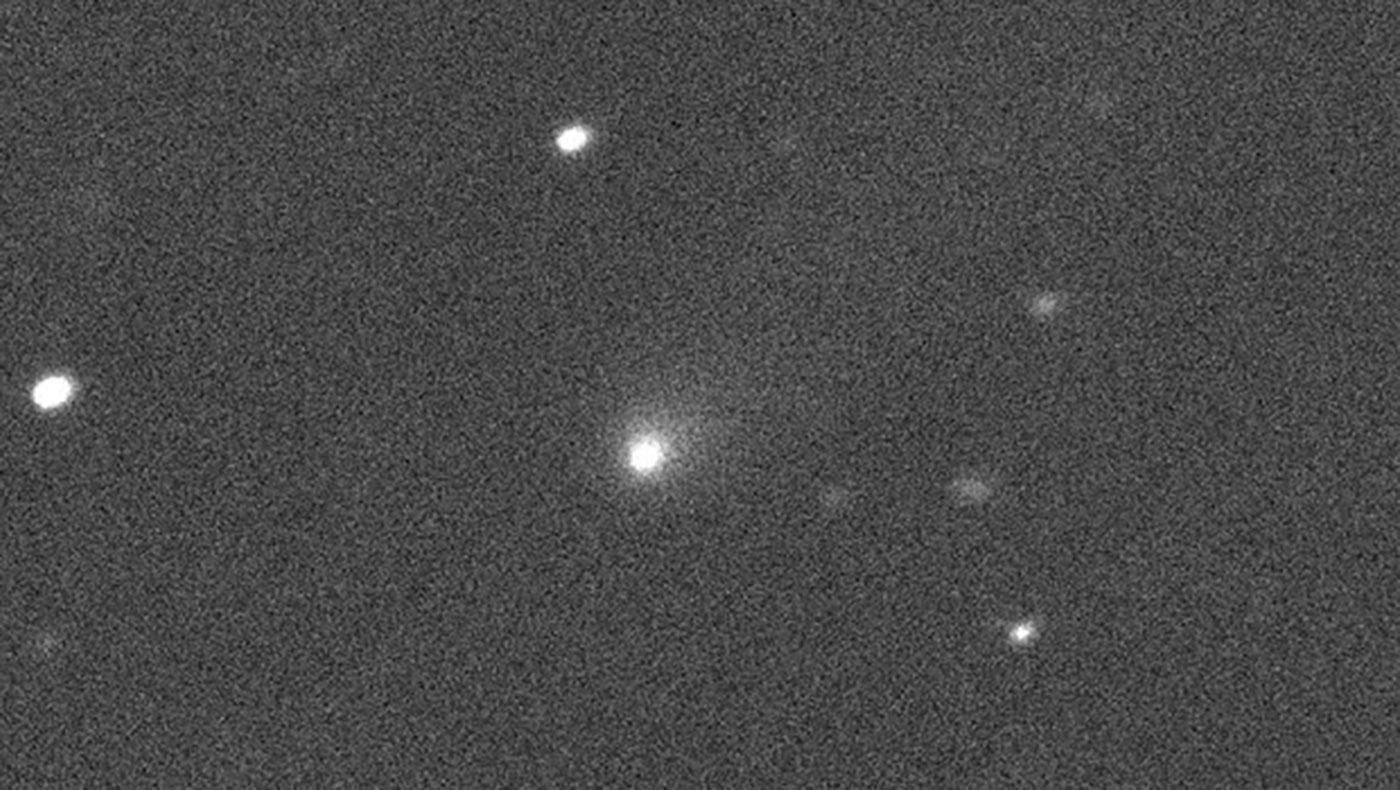
It seems that our Solar System is hosting another visitor.
Two weeks ago, an amateur astronomer in the Crimea, Gennady Borisov, found a dim and distant object barreling our way. Subsequent observations with the Gemini North Telescope on Hawaii’s Mauna Kea have revealed that this dot on the sky sports a modest tail – the hallmark of comets. It has already been christened with the fetching moniker C/2019 Q4 (Borisov).
OK, but there are roughly a trillion comets in our Solar System, so how worked up should you get about this one? The answer is: at least as excited as you might get about next year’s Grammys. Here’s why.
Almost two years ago, another telescope in Hawaii discovered an object swinging around the Sun whose orbit indicated that it was not from our Solar System. ‘Oumuamua, as this object was called, followed a hyperbolic rather than an elliptical orbit, a sure sign that it’s from somewhere far beyond the domain of the Sun’s retinue of planets, moons, asteroids, and comets. It was presumably kicked out of someone else’s solar system by random gravitational interactions with planets there.
No telescope could see ‘Oumuamua in detail, but from the changes in the amount of light it reflected astronomers deduced that it was shaped like a Cuban cigar. Despite the fact that it had no obvious tail, the reddish color of ‘Oumuamua suggested that it was a comet too.
However, not everyone was so sure. Avi Loeb, the head of the Harvard Astronomy Department, wrote an ingenious research paper in which he argued that it was possible that – just as in Arthur C. Clarke’s 1973 story “Rendezvous with Rama” – ‘Oumuamua was man-made. Or rather, alien-made.
One of the arguments Loeb offered to bolster this idea was that the chances of a randomly expelled comet accurately targeting the center regions of our Solar System were about the same as you winning next month’s Powerball jackpot. So either there were gazillions of interstellar comets peppering space, or this one was deliberately aimed our way – possibly by a crew within, keen on paying us a visit.
Well, C/2019 Q4 (Borisov) also seems to be an interstellar traveler. Like ‘Oumuamua, it too apparently has a hyperbolic trajectory. So that would make two such visitors in two years – suggesting that, well, there really are gazillions of these things sailing silently through space.
That’s obviously a less appealing conclusion than learning that some of these comets are not hunks of rock and ice but someone’s interstellar rockets. That’s still possible, although the chances seem smaller now.
If we find another one of these oddball objects within a few years, I think we’ll have no choice but to conclude that – while aliens may indeed be out there – they’re not piloting giant spaceships through our planetary system.





